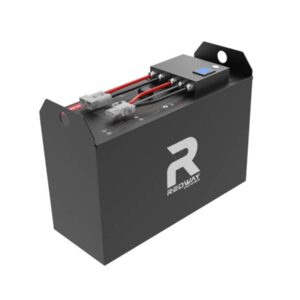Can you trickle charge a forklift battery?
Trickle charging forklift batteries is possible but requires strict adherence to manufacturer guidelines and battery chemistry specifications. Lead-acid batteries may tolerate controlled trickle charging (≤C/20 rate) to prevent sulfation during storage, while lithium-ion variants typically use smart BMS-controlled maintenance charging instead. Key precautions include temperature monitoring (20–30°C ideal), voltage regulation (±1% tolerance), and hydrogen ventilation—failure risks thermal runaway in lead-acid or cell imbalance in lithium.
Optimal Forklift Battery Installation and Maintenance
What battery types allow trickle charging?
Flooded lead-acid (FLA) and AGM batteries accept trickle charging at 0.1C max, maintaining 13.8V (12V systems). Lithium-ion requires BMS with float charge cutoff to prevent dendrite growth. Pro Tip: Never trickle charge damaged cells—check impedance weekly with a megohmmeter.

Industrial FLA batteries benefit from maintenance charging during seasonal downtime. For example, a 48V 500Ah lead-acid pack needs ≤5A trickle current to offset self-discharge without electrolyte stratification. However, lithium forklift batteries use periodic top-up charges (95%–100% SOC) managed by onboard BMS instead. Transitionally, improper voltage matching causes lead-acid grid corrosion—why do some warehouses still prefer manual equalization? Because sulfation reversal in older FLA systems justifies the trade-off.
| Battery Type | Trickle Voltage | Max Duration |
|---|---|---|
| Lead-Acid (FLA) | 2.25V/cell | Unlimited* |
| AGM | 2.35V/cell | 72 hours |
| LiFePO4 | 3.45V/cell | BMS-controlled |
How does trickle charging affect lifespan?
Controlled trickle charging extends lead-acid lifespan by 15% through sulfate dispersion, but overcharging corrodes plates. Lithium batteries suffer SEI layer thickening if trickled beyond BMS thresholds. Pro Tip: Use thermal sensors on terminal posts—temperature spikes >5°C indicate malfunction.
When maintaining a 36V lead-acid fleet battery, trickle charging at 2.27V/cell (40.9V total) prevents self-discharge during weekend shutdowns. Conversely, lithium-ion packs left at 100% SOC with continuous trickle current experience accelerated capacity fade—why don’t all facilities switch to scheduled topping charges? Because legacy infrastructure retrofits prove cost-prohibitive. Practically speaking, hybrid systems using timed relays show 23% longer service intervals than uncontrolled trickle methods.
Battery Expert Insight
Forklift Battery Applications and Maintenance Tips
FAQs
Can I trickle charge a lithium forklift battery overnight?
Only with BMS-approved chargers—continuous 3.4V/cell maintenance triggers protection circuits. Most lithium systems use intermittent top-up cycles instead.
What voltage indicates trickle overcharge?
Lead-acid: >2.4V/cell (57.6V for 24V system). Lithium: >3.6V/cell without BMS intervention—immediately terminate charging.
